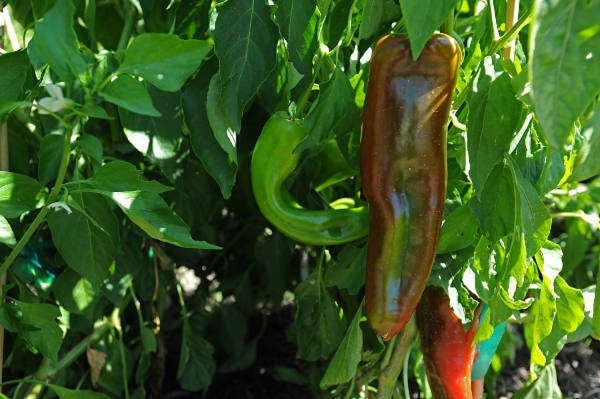
While substantial rains over the last two weeks have helped to reduce drought stress and replenish soil moisture in wide areas across the Southwest, too much of a good thing can work against farmers. So says some New Mexico green chile producers who have been unable to access fields in over a week and in one case watched a hail storm bring widespread damage to some acres.
According to National Weather Service (NWS) forecasters in Albuquerque, isolated areas in Doña Ana and Luna Counties received as much as 10 inches of rain since mid-September, storms spawned by tropical weather systems off the Pacific coast of Mexico. Compounded by cooler air from the north, heavy thunderstorms are expected to continue until mid-week.
For the latest on southwest agriculture, please check out Southwest Farm Press Daily and receive the latest news right to your inbox.
New Mexico State University Cooperative Extension specialist Stephanie Walker says severe weather has been hit and miss on chile fields in recent days. But heavy rains and exceptionally wet conditions have opened the door to two types of associated diseases, phytophthora and chile pod rot.
Disease problems
Chile root rot disease, caused by the water mold Phytophthora capsici, is a major disease in New Mexico. Often called chile wilt, it differs from vascular wilts caused by Verticillium dahliae and Fusarium oxysporum. Large plants wilt and die, leaving brown stalks and leaves, and small, poor-quality fruits. The disease is most common in over-watered areas such as low spots, heavy soils, lower end (tails) of sloping fields or upper ends (heads) of long fields. It is also common during successive heavy rains over an extended period of time.
Phytophthora blight usually begins at or below the soil line. Water-soaked, dark brown lesions on the lower stems (collar rot phase) usually extend upward for an inch or more above the soil line and may expand to girdle the stems, preventing upward movement of water and nutrients.
Pod rots, another problem that may be surfacing in some New Mexico chile fields, can result in serious losses as well, especially in rainy and humid conditions. Infection is even more likely to occur when plants are large and lush, and when foliage from other rows overlaps. According to Walker, the heavier rains arrived just as the green chile harvest season was peaking.
"We definitely have had some disease incidence in the fields," Walker reports, but he says so far disease has been limited to a few of the wettest fields in the hardest hit areas.
Producers from Hatch to the Las Uvas and Rincon Valleys report varying rainfall amounts on adjoining fields. NWS forecasters report thunderstorms over the last week were sporadic and fast moving and could quickly drop heavy rain on one farm only to skip several farms or fields before resuming a watery deluge.
Hail storms
In addition to concerns over soaked fields and chile diseases, there were also isolated reports of hail storms last week that decimated a number of chile fields near Garfield just northwest of Hatch. Officials say the area affected by the hail was limited to a few chile fields stretched over several miles, but those that were hit were completely destroyed.
In spite of abnormally heavy rains in recent weeks New Mexico chile industry officials say fields are being harvested as quickly as they dry out enough to be worked, and though a few instances of diseases related to wet conditions have been reported, green chile harvest so far as been good. While chile acres are down slightly from last year, crop quality and yields have ranged between average and above average for most of the chile country, and plenty of chile remains to be harvested.
Producers hope to continue harvesting chile well into November if fields can escape early frost. Before that first frost, historically, growers watch chile change color as shorter days and cooler night spur chile along in the maturity cycle, and the chile turns from green to red while still on the plant.
While farmers are happy to get the good rains of late, many hope for sunshine and warmer temperatures to help dry out fields. But the forecast for the first half of the week calls for a continued chance for thunderstorm development, some of which may include hail associated with more severe storm cells.
According to a USDA report last week, about 75 percent of the state's green chile crop has been harvested. That compares with just over 90 percent harvested last year for the same period.
About the Author(s)
You May Also Like




